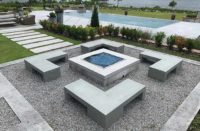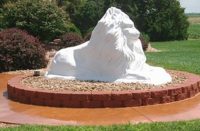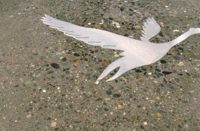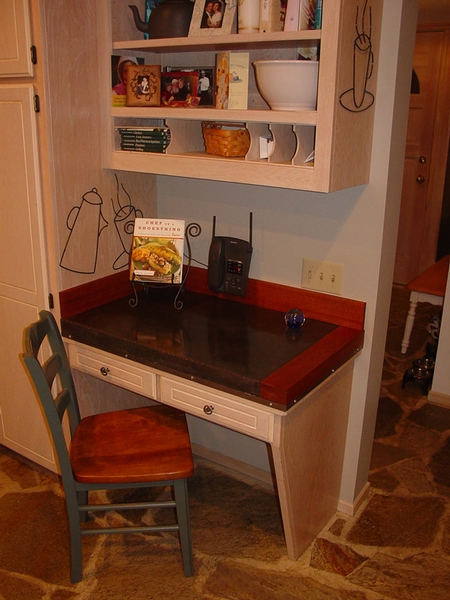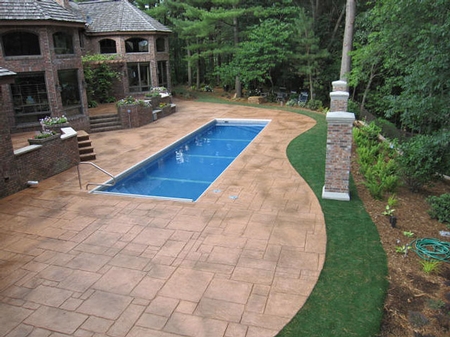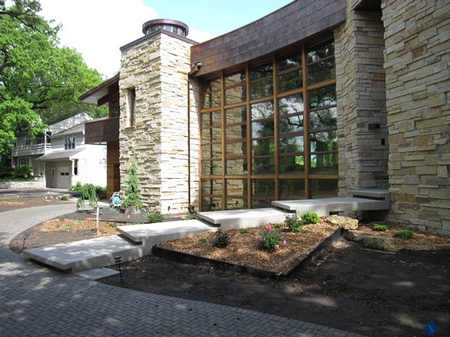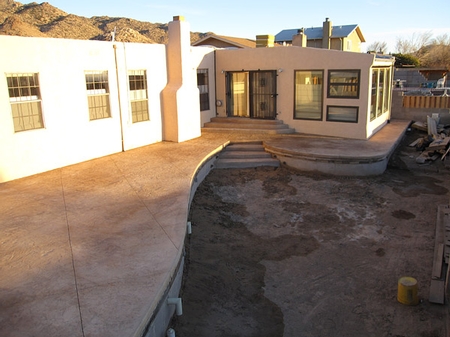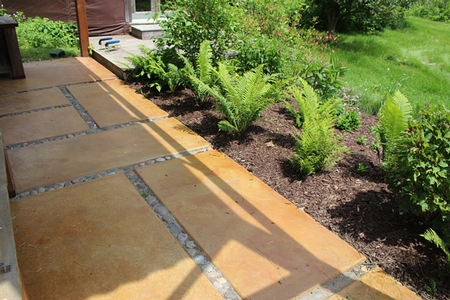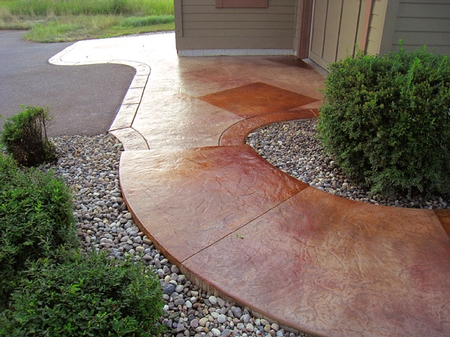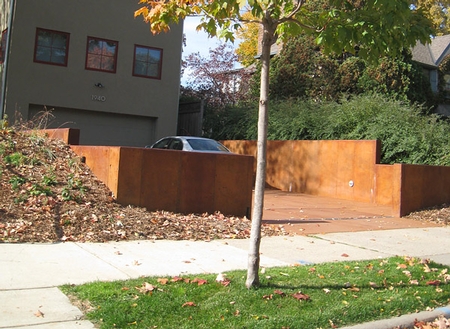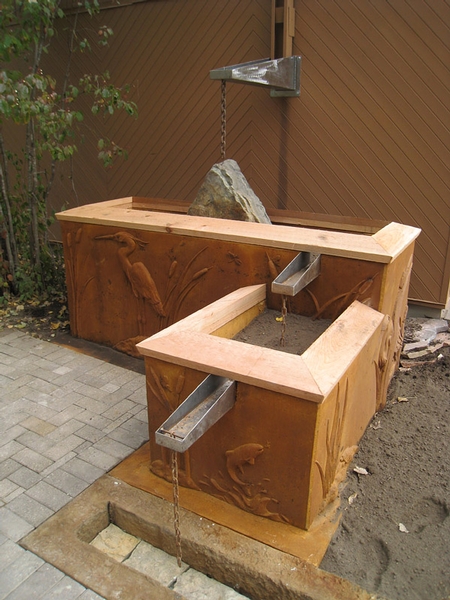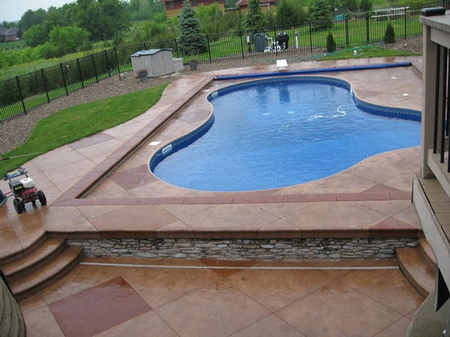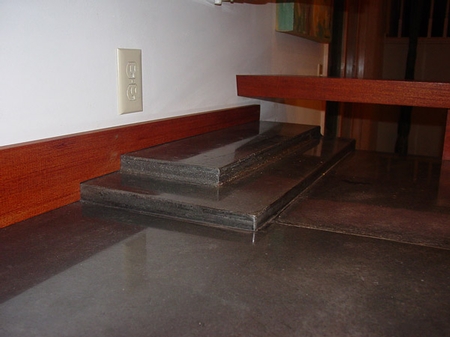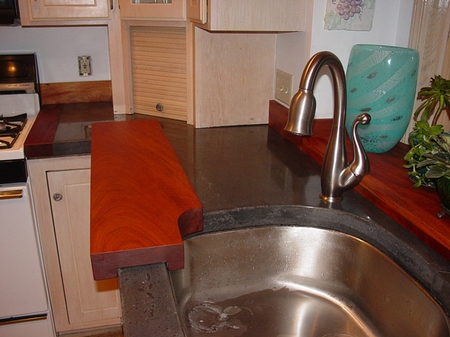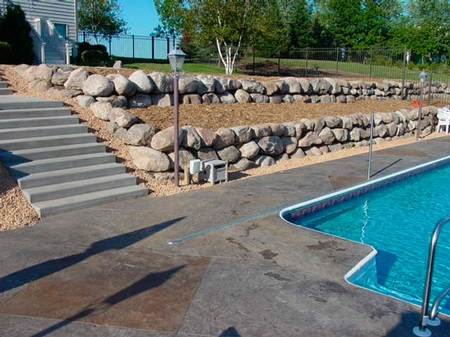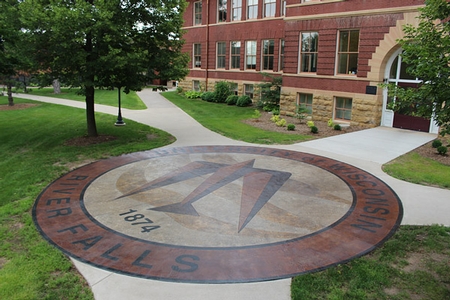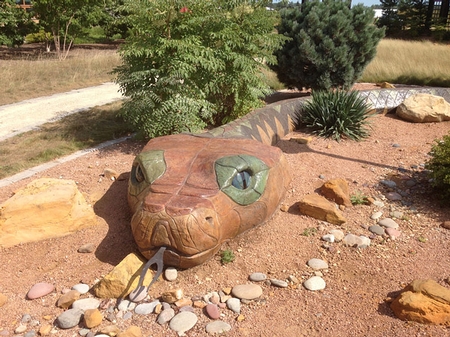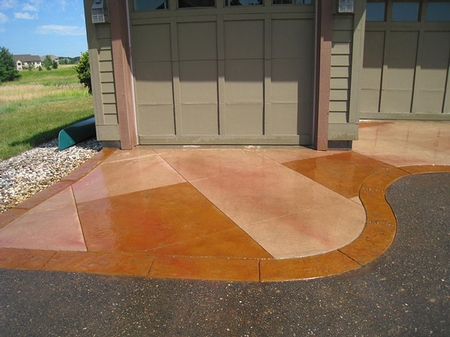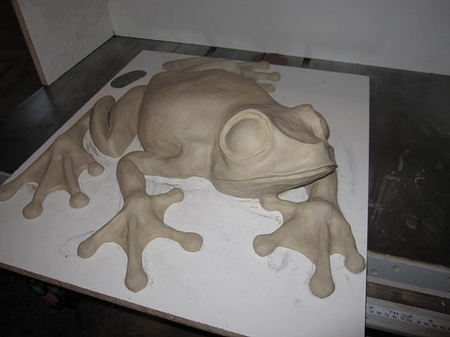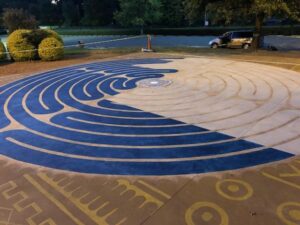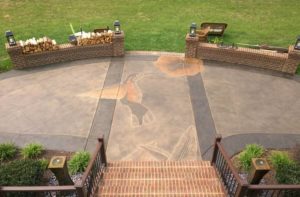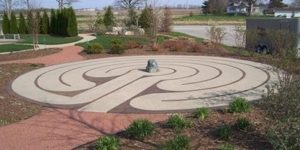 |
 |
 |
Nolan King, owner of King Architectural Concrete and Construction LLC in River Falls, Wisconsin, started his own construction business at the age of 23 after graduating from college in 2001 with an engineering degree. His business focused primarily on home remodeling work.
“I started my own company probably three months after graduating from college,” says King, now 38. “And then probably within six months of that I discovered concrete.”
He took classes offered by Minnesota ready-mix leader Cemstone to familiarize himself with the material. Also at that time, one of his employees was working in Seattle with another concrete company and reported it was doing a lot of stamped and colored concrete and staining. “He convinced me that we needed to try it. Sure enough we tried one project and I fell in love with it.”
First up: patios
That initial project was a stamped patio, and as soon as King completed it he added decorative concrete to his repertoire. “On top of my engineering degree I also studied art,” he says, “and concrete was more of an art form than the framing process. I enjoyed the ability to manipulate the concrete surface and create different stone textures. It just opened up a new world of being creative in my work.”
 |
 |
 |
Since then, King has continued with framing and general construction — work he often performs during the Wisconsin area’s harsh winters. While King Architectural Concrete and Construction has been known to undertake concrete countertops, King primarily enjoys building hardscapes, landscaping and one-of-a-kind outdoor living projects. “Retaining walls, patios, pool decks…,” he says, “anything we can get our hands on that’s interesting in the backyard.”
In the early to mid-2000s in the Midwest, King says, decorative concrete was fairly new and unfamiliar, but once people saw what could be done they got onboard.
Early on after starting his business, King connected with a local pool company in Hudson and started doing its stamped concrete pool decks. “Most of my early work started out as backyard patios and the pool decks, and the people were very eager for it,” he says. “Everybody was loving it.”
 |
 |
 |
Snakes and frogs
One of those early interesting projects, from 2008, was a stamped concrete sidewalk that turned into a three-dimensional sculpture of a snake. His clients had recently returned from Brazil, where they had seen a sidewalk that was painted to look like a snake.
“This is where her idea left off and I jumped onboard,” says King. “I developed a stamp to create the skin texture and made a positive image out of clay and then sprayed it with rubber so we could use it as a rubber stamp. We convinced the owners to let us sculpt the snake head and bring it up out of the ground instead of doing a flat sidewalk the whole way.”
 |
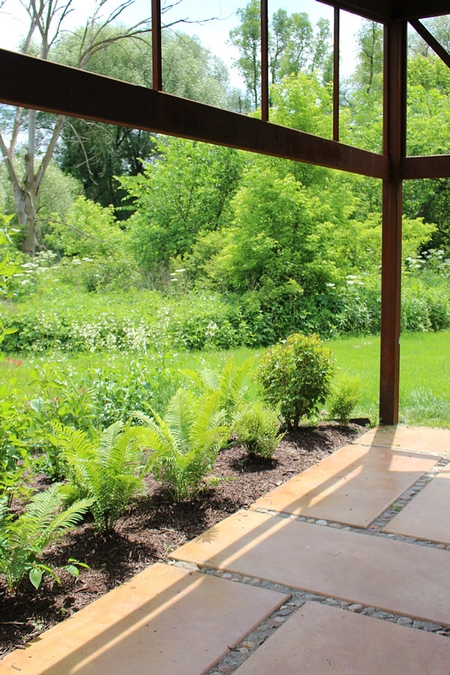 |
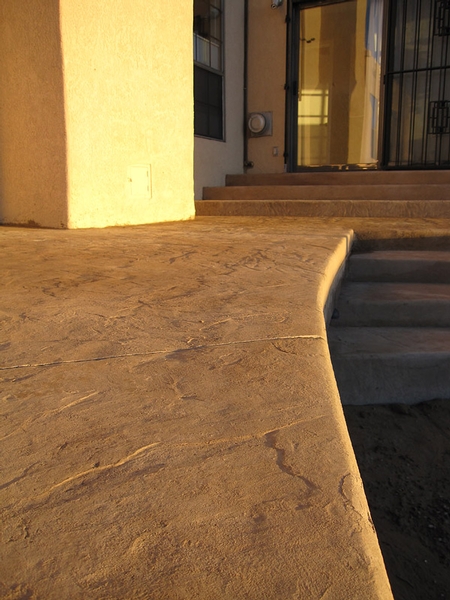 |
King focused on cement mixes allowing for about four hours of working time. He created a perimeter form of the shape he wanted along with some rebar grid, sculpted the exposed surface and then stripped the forms and undercut the snake to get the shape he wanted.
The snake’s glass eyes were created in King’s glass studio he built himself. “During college I also studied glass blowing and one of my final classes was how to build a glass furnace,” he says. “Shortly after college I decided to build my own studio from scratch.” He’s so busy now with concrete that he rarely gets to use the space himself. Instead, he rents it out to other artists and to college students.
Since the success of that snake pathway and another similar one, King has completed other jobs with three-dimensional elements such as frogs. The client who wanted the frogs chose him because of the snake pathways, but she made it clear she was afraid of snakes and would not abide a “snake anything” in her yard.
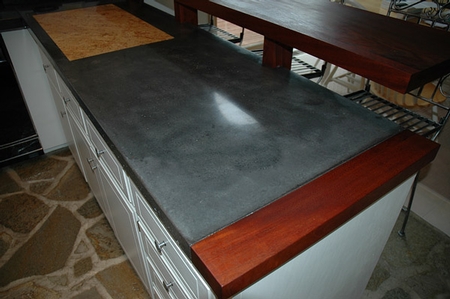 |
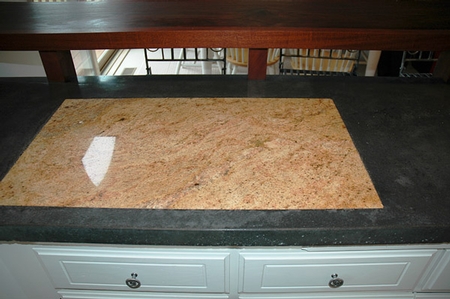 |
 |
Conquering challenges
With snakes out of the picture, King dreamed up a few lizards, a frog and a hand-sculpted turtle for her yard, as well as a dog-washing station with relief accents.“The challenge with those was that we had to make a positive image, make a mold and then cast those and keep the legs from breaking off,” King recalls. To reinforce the legs and make them stronger, he used fiber mesh that’s typically part of the mix design for projects in earthquake-prone areas. “And we were able to keep the legs attached,” he says.
While those three-dimensional projects are eye-catching, they’re not the most cost-effective projects to work on. One profitable stand-out project was creating the seal of the University of Wisconsin at River Falls. “It was extremely rewarding, being an alumni and being able to work at the university,” he says. “They gave me an 8-by-11 piece of paper that had the seal on it and told me they wanted it 30 feet in diameter. I had to figure out how we would blow that up to scale and make it exact.”
King has continued on with the framing and general construction work and is currently working on renovating a turn-of-the-century barn on western Wisconsin’s Rush River into a fly-fishing retreat. The barn had a crumbling stone foundation, which was lifted to pour a new t-mass foundation (a foundation with polystyrene sandwiched in the middle).
The property owner likes the fact that the t-mass has an insulating factor without having to finish the inside or outside, which added to the overall look of the project. The foundation walls will be acid stained to complement the Corten steel siding. The lower-level floor will be acid stained as well, with the color chosen to best showcase the custom-welded staircase leading to the main and second-story levels.
www.nolanking.com
